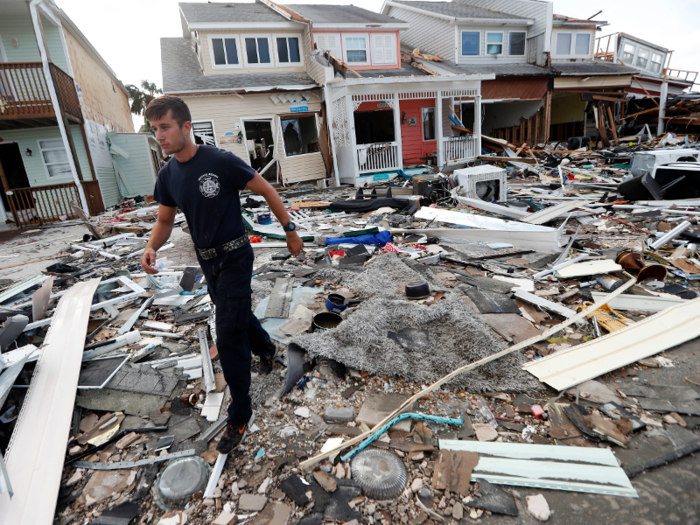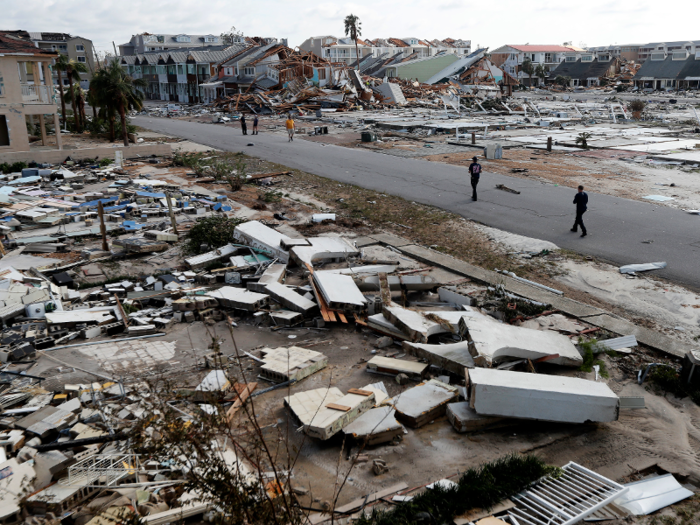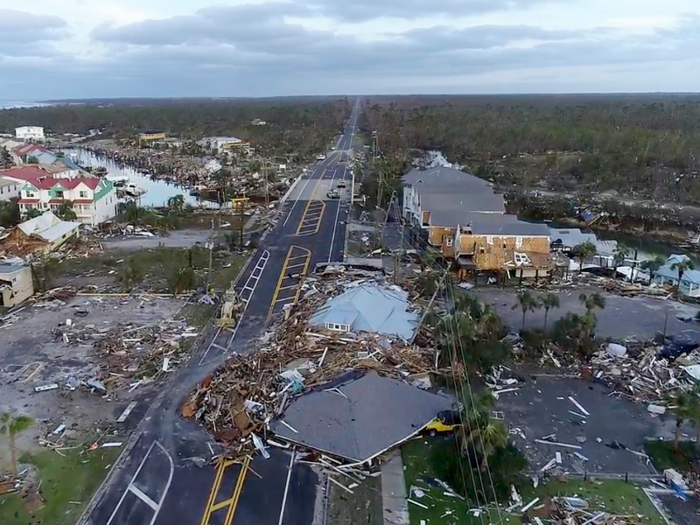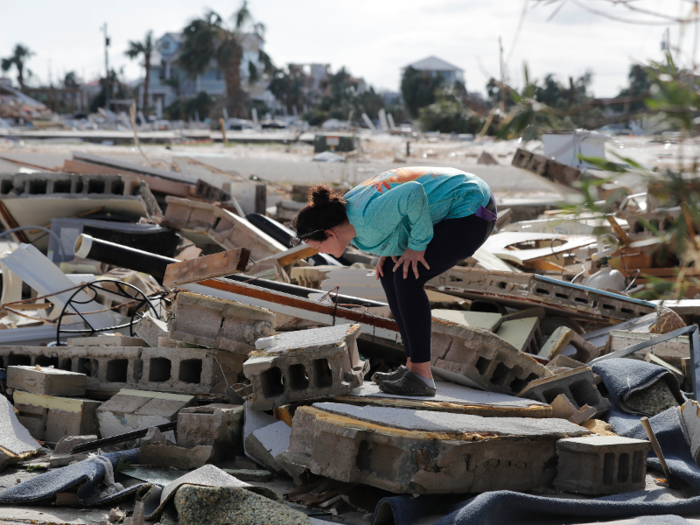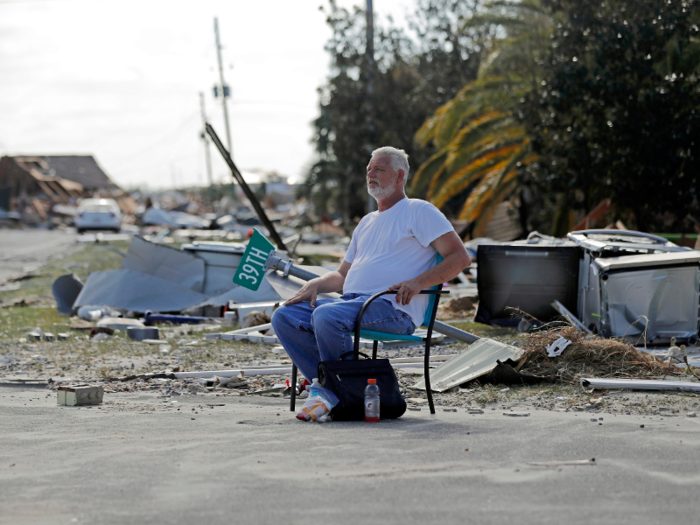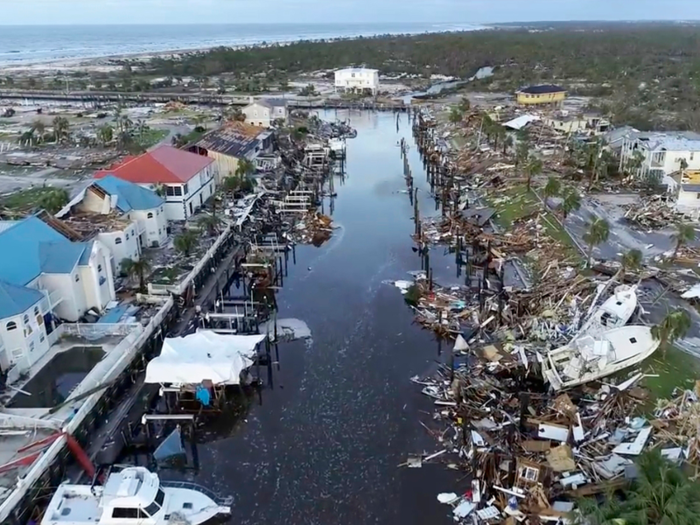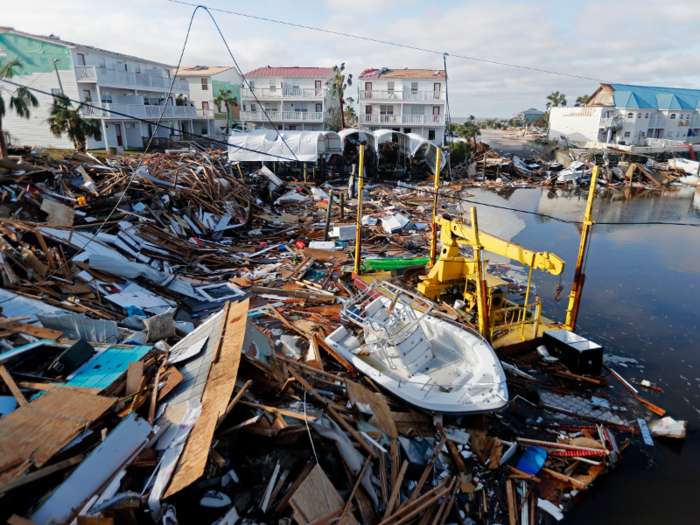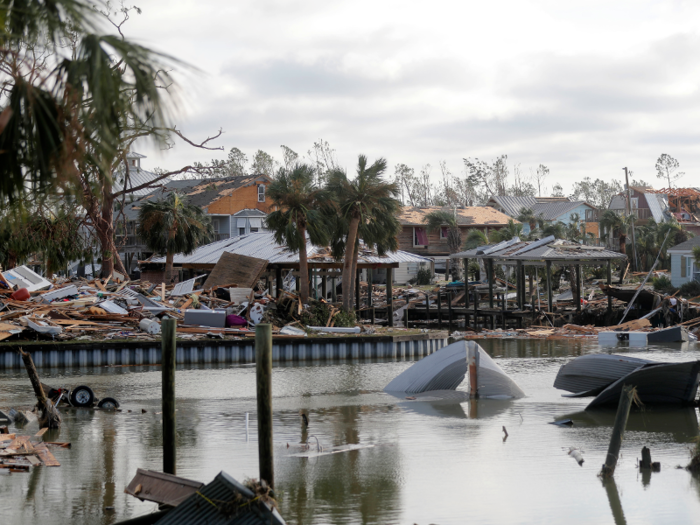According to the Red Cross, as many as 320,000 people did not evacuate despite official orders and dire warnings.
Although some people chose to remain in their homes, others were unable to get out in time for financial reasons or due to disability or illness.
The storm intensified rapidly — it grew from a tropical depression into a Category 4 hurricane in just 72 hours, which gave residents little time to make plans.
By Thursday morning, Michael had weakened to a tropical storm as it moved toward central Georgia. But the wake of destruction it left behind will make for a long and difficult recovery.
At least 479,000 customers were left without power in Florida, Georgia, and Alabama as of 6 p.m. ET on Wednesday, according to the US Energy Information Administration.
Michael's core is expected to move off the mid-Atlantic coast late Thursday or early Friday. Forecasters say strong winds are still possible in parts of northeastern North Carolina, southeastern Virginia, and the Delmarva Peninsula (which is divided between Maryland, Virginia, and Delaware).

